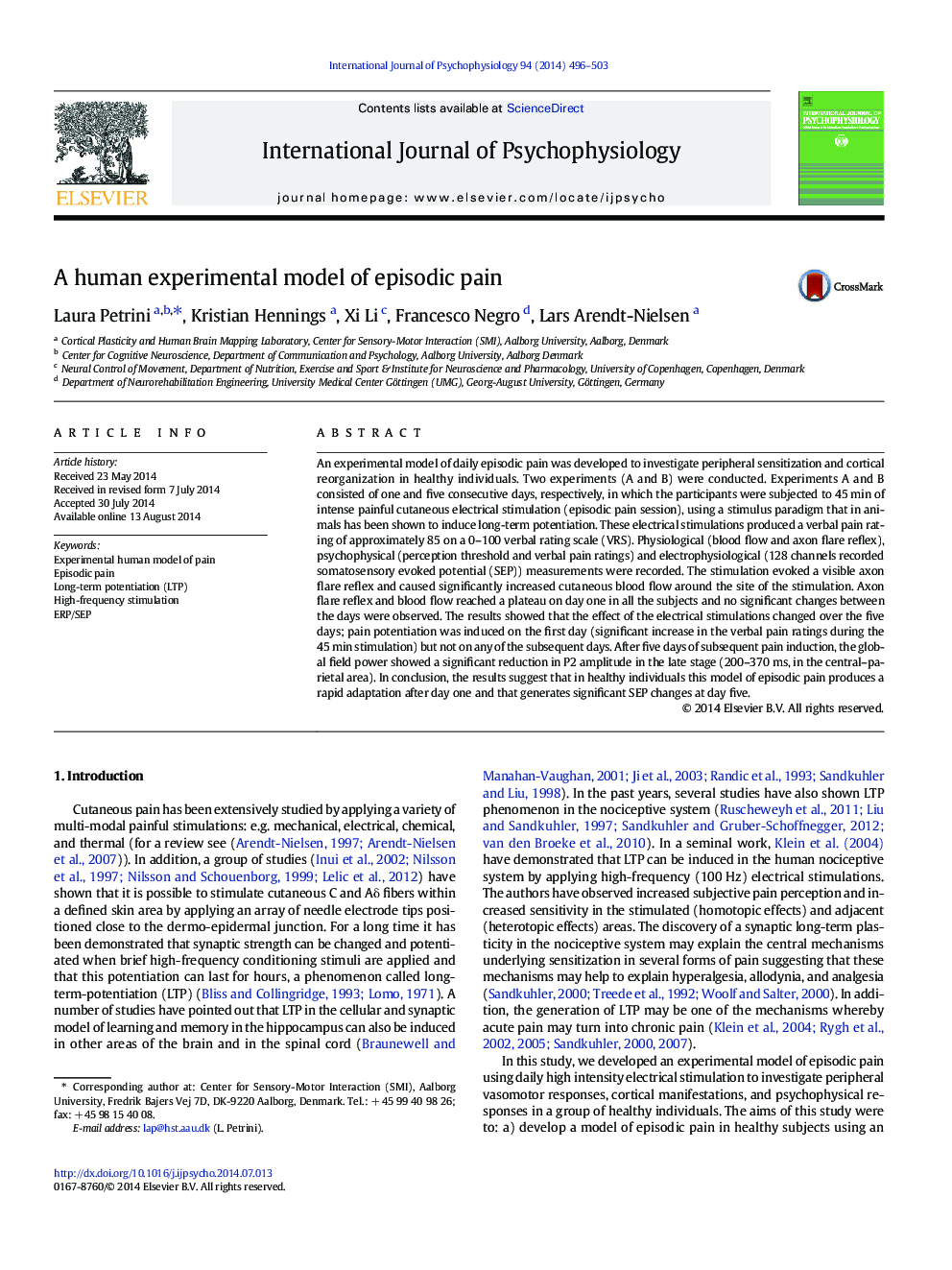| Article ID | Journal | Published Year | Pages | File Type |
|---|---|---|---|---|
| 930187 | International Journal of Psychophysiology | 2014 | 8 Pages |
•An experimental model of human pain has been developed.•A pain potentiation was induced during day 1.•A pain reduction was evident in the following 5 days.•Cortical changes of rapid adaptation were visible.
An experimental model of daily episodic pain was developed to investigate peripheral sensitization and cortical reorganization in healthy individuals. Two experiments (A and B) were conducted. Experiments A and B consisted of one and five consecutive days, respectively, in which the participants were subjected to 45 min of intense painful cutaneous electrical stimulation (episodic pain session), using a stimulus paradigm that in animals has been shown to induce long-term potentiation. These electrical stimulations produced a verbal pain rating of approximately 85 on a 0–100 verbal rating scale (VRS). Physiological (blood flow and axon flare reflex), psychophysical (perception threshold and verbal pain ratings) and electrophysiological (128 channels recorded somatosensory evoked potential (SEP)) measurements were recorded. The stimulation evoked a visible axon flare reflex and caused significantly increased cutaneous blood flow around the site of the stimulation. Axon flare reflex and blood flow reached a plateau on day one in all the subjects and no significant changes between the days were observed. The results showed that the effect of the electrical stimulations changed over the five days; pain potentiation was induced on the first day (significant increase in the verbal pain ratings during the 45 min stimulation) but not on any of the subsequent days. After five days of subsequent pain induction, the global field power showed a significant reduction in P2 amplitude in the late stage (200–370 ms, in the central–parietal area). In conclusion, the results suggest that in healthy individuals this model of episodic pain produces a rapid adaptation after day one and that generates significant SEP changes at day five.
